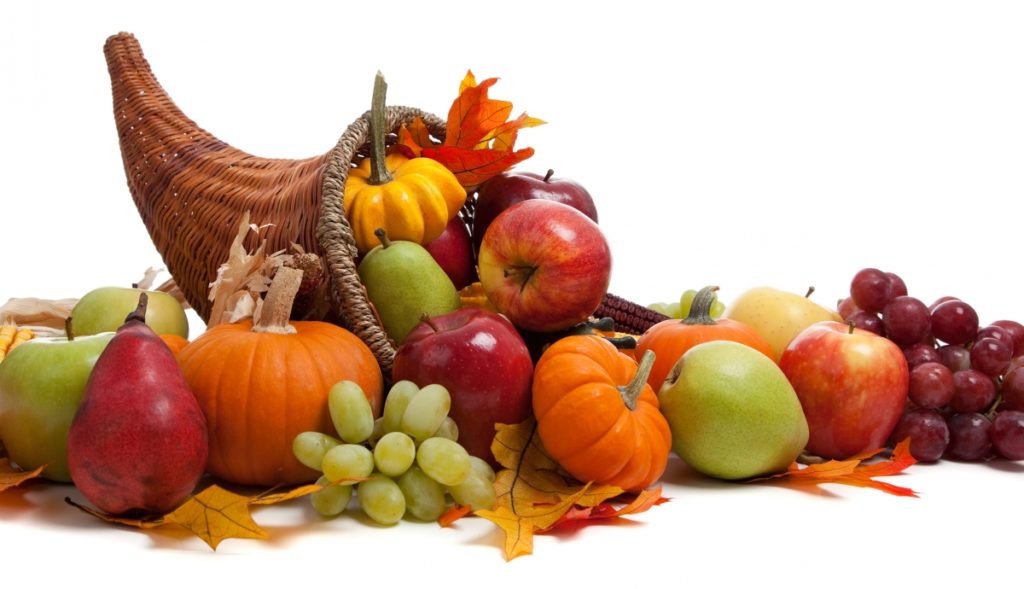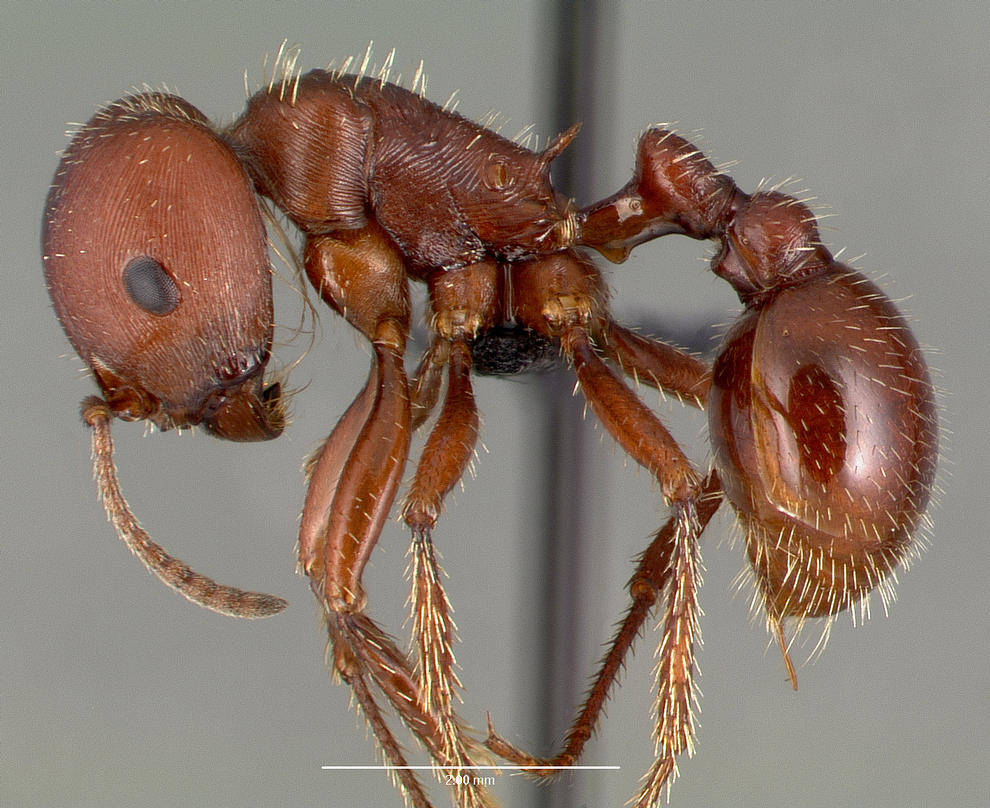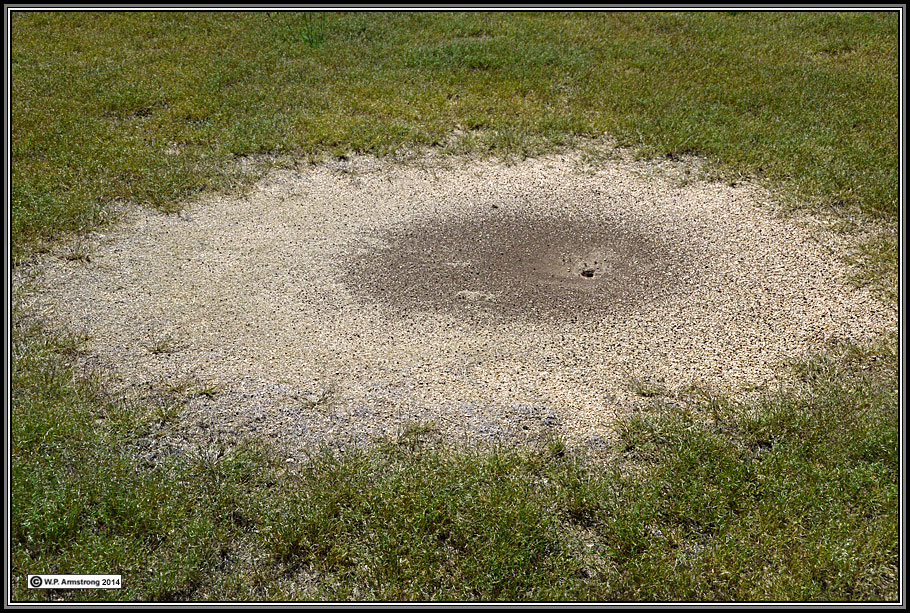
Thanksgiving is just around the corner and as we look to gather around the table with loved ones and give thanks for all of the blessings we have received this year, we are reminded of what has made this all possible: gratitude and the yearly fall harvest. From decorations of cornucopias to the abundant feast itself, Thanksgiving is all about celebrating a successful harvest, whether it’s remembering the first miraculous harvest that would eventually spawn this tradition, or being reminded how lucky we are to be able to enjoy such a banquet with people we love. Though many of us do not do the harvesting ourselves, dedicated farmers’ hard work comes to fruition and provides us with fresh nutritious food that keeps us happy and healthy the whole winter through, something to truly be thankful for.
But farmers are not the only ones dedicating their days to harvesting, there is a much smaller, but still very committed, hard-worker, the harvester ant. These hearty ants spend their lives harvesting for seeds to feed their colony, so much so that this behavior became the epitome of what we think of when we think of them. So it is in honor of all of the successful harvests that this country has seen, and the hard work put into them that we take a look at the indigenous harvester ant.

Why are they Called Harvester Ants?
Harvester ants are one of the most aptly named ant species, as they get their common name from their food-gathering behavior. Given that their food of preference is seeds, this means that they are spending their days collecting, or harvesting, seeds (such as wild sunflower, Johnson grass, burr clover, alfalfa, and even small beans) for their meals. They will then store this harvest in their nest to be feasted on by the colony. If their preferred foods aren’t available these resourceful ants will harvest for dead insects instead of seeds, adding them to their food stores.
What do Harvester Ants Look Like?
With 22 species of harvester ant in the United States, and at least 10 of those found in Texas (the most common being the red harvester ant), there is a bit of variance in the physical appearance of the different species of ants. In general, they are either orange to red or brownish-black, the workers are 1/4” to 1/2” long with 6 legs and antennae, most species have a 2-segmented mid-section with a pair of spines on the top (except for red harvester ants which notably do not have spines), many have square heads, and most have long hairs on their head that form a sort of “beard”. The “beard” is utilized in excavating nests as a means to push material from the nest, sort of like a shovel or bulldozer. These large, robust ants are slow movers, cannot walk up slippery vertical surfaces (such as glass), and have mouthparts designed for chewing the seeds that form the primary part of their diet.
In addition to workers (up to 10,000 for some species), the colony will include a single queen, which can live upwards of 17 to 30 years (nearly half the life of the colony itself, which tends to survive for 14 to 50 years). And on a summer afternoon after a rain, the colony will release reproductive harvester ant swarmers to go about the task of mating and building new colonies, with the males dying shortly after mating and the females shedding their wings and digging a burrow to lay the eggs that will eventually become the worker ants of a new colony.
Though the ants do have a fairly specific look, the easiest way to spot a harvester ant is by its distinctive nest. They generally create large mounds, almost 4.5 feet in diameter at times, with barren vegetation surrounding the nest.

Where are Harvester Ants Found?
Though harvester ants are still considered a common Texas ant, they are not nearly as prevalent today as they were in the first part of the 20th century; this is largely due to repercussions from the influx of fire ants.
Geographically, harvester ants are primarily found west of the Mississippi river, though they are also found in Florida.
Outdoors, harvester ants make moderate to large mounds (depending on the species) in flat, open, and sparsely shaded areas or dry, sandy or hard soil, and will strip a large area (3 to 6 foot circle) of vegetation surrounding their nest to prevent shading. They will also strip the vegetation along their foraging trails that radiate out from their nest. The nest can be up to 3 feet deep and generally has 1 central entrance with small pebbles, charcoal, or bits of dead vegetation on the surface of the mound, particularly around the opening. Often, colonies are widely separated; however, in cases of heavy infestation, there can be multiple nests in closer proximity to each other (as many as 80 or more nests per hectare). These ants have such a strong preference for nest location that they are known to move the entire mound if there is a change in climate or a drastic increase in shade.
Harvester ants are rarely found Indoors; they are not known to invade homes or structures, so if they are seen indoors it is generally in very small numbers as they have simply gotten lost; they are not foraging or looking to set up a colony indoors like other ant species.
Are Harvester Ants Dangerous?
The short answer is “Yes, harvester ants can be dangerous.” Not only do these ants possess a nasty sting, they have the added negative of potentially causing costly damage to yards and rangeland.
Though these ants are not considered as aggressive as fire ants, they can become aggressive, and will most certainly bite or sting anything that disturbs their nest, potentially even killing the offending animal. Their painful, and poisonous, sting is known to last longer than the stings of other ants and spread along lymph channels, potentially becoming medically serious. This is in addition to the possibility of the sting causing a serious allergic reaction, especially in those who are more susceptible to insect-sting allergies. Even if you do not get stung by these ants, they are known to be vicious biters.
Fortunately, the ants are large and their mounds are fairly obvious, so avoiding contact with them is significantly easier than it is with ants like fire ants. Unfortunately, because their mounds are large and they not only harvest seeds from the nearby vegetation, they also clear a significant area of vegetation around their mound itself, they can cause considerable damage to ornamental lawns and home gardens, and in large numbers can damage pasture and range land, reducing yield.
How do you Eliminate Harvester Ants?
Once you have determined that you are facing a harvester ant issue, the best thing to do is call The Bug Dude at Mid-Cities Pest Control, Inc. and get one of our certified pest control technicians to take care of the problem. Not only do we know the best time to treat the ants, we will also be best able to choose the most effective product and dosage amount to eliminate the colony that is causing you an issue without over-treating; this is of particular importance for red harvester ants which are a primary food source for the Texas horned lizard, a protected species. Due to this connection with the Texas horned lizard, the harvester ant should ideally only be treated for minimally and only in cases where they are a danger to person or property, which is again why it is so important for these ants to be evaluated and treated by a professional, and not using DIY methods.
How can you Prevent Harvester Ants?
Since harvester ants are not an indoor pest, there are very few preventative measures that can be taken to keep them from becoming an issue as it’s much more difficult to deter a pest from enter your yard than it is your home. The two biggest preventative measures you can take are:
- Keep sources of seeds (such as gardens or bird feeders) to a minimum
- Make your yard less hospitable by increasing shade cover

This Thanksgiving, if you see harvester ants trying to get in on the holiday celebrations, don’t wait until they have decimated a large portion of your yard, call Mid-Cities Pest Control at 817-354-5350 and get a licensed technician to evaluate the issue and go over the best course of action to keep your harvest celebration intact.
Additional Resources:
“Harvester Ants” – PestWorld.org
“Red Harvester Ant” – Field Guide to Common Insects – Texas A&M AgriLife Extension
“ANTS, WASPS, AND BEES (Hymenoptera)” – Roger D. Akre, Hal C. Reed, in Medical and Veterinary Entomology, 2002
Author Bio: Alissa Breach has been gaining knowledge and experience around pest control concerns over the last 10 years while working for Mid-Cities Pest Control. She has a creative writing BA from UW-Madison and is always pursuing new and interesting writing projects.




